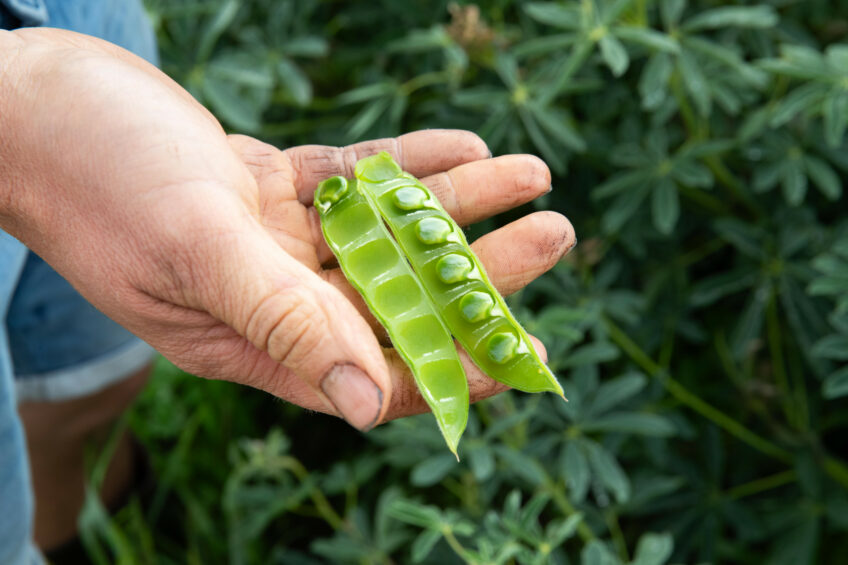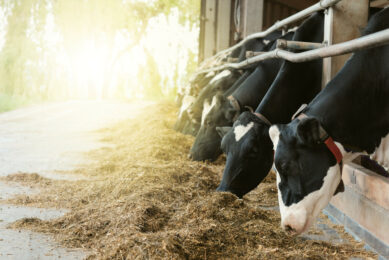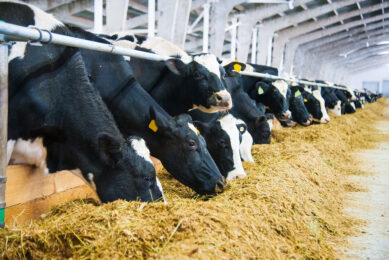Lupin feed guide gives nutritional and processing insights

A new lupin feed guide is about to be released in Canada, offering an in-depth look at the latest background studies, current acreage, and updates on species-specific feed research.
Lupins continue to make inroads in the feed sector in Canada and beyond, with a new feed guide about to be released by the Canadian Feed Research Centre at the University of Saskatchewan, based on its recent flaking, grinding and nutritional analysis studies.
Lupins have been grown historically in several areas of the world for livestock feed. For feed and food, it’s now grown widely in Australia (mainly in the state of Western Australia), with some production in Canada, England, Italy, Greece, Spain, Portugal, Russia and other countries.
Lupins attract strong interest as a feed ingredient for many reasons. It offers a complete amino acid profile and has a protein level similar to soybeans (about 36%). It also has very little starch, moderate levels of mostly unsaturated fat (8%) and moderate amounts of carotenoids such as beta carotene. While lupin does contain a substantial amount of fibre, research has shown that even young grower pigs (30 kg) can effectively handle lupin fibre at 35% inclusion levels. There is interest in boosting the pig feed intake/growth rate through using the lupin-specific enzymes polygalacturonase and pectin methyl esterase.
Lupins are also easy to handle and store due to their low moisture level and a robust seed coat, which is impervious to insects. Genetic improvement to further reduce alkaloids continues, with several enzymes involved in alkaloid synthesis having been identified.
Flaking, grinding and feed guide
With others, Dr Jing (Jessica) Wang, manager of project and business at the Canadian Feed Research Centre, recently completed feed production investigations of Lupinus angustifolius grown in Alberta, a European variety multiplied in Canada under contract for Lupin Platform Inc., which also holds the North American distribution rights for this variety. Lupin Platform Inc. is in its 6th year of developing the entire lupin value chain.
Based on this analysis, the Centre is preparing a feed guide for ruminants, monogastrics and aquaculture and will include a review of lupin applications from references and recommendations for use. “We will also make a specifications table with some basic chemistry analysis results,” said Wang.
For the guide, Wang and her colleagues conducted flaking trials, which went well, and also put lupin seed through a roller mill and hammer mill to determine which worked best. Colleague Dr Annette Suominen reports that the portable roller mill had trouble handling the shattered pods, and seed throughput was slow. “Also, the softness of these seeds, fresh off the combine, was not allowing very consistent processing,” she explained. “So, right after harvest, the recommendation is to have cleaned, complete seed for rolling that has been stored at least a month in a bin to undergo ‘bin-sweat’ or hardening.”
A hammer mill was more successful and allowed processed lupins to flow more consistently. However, the very small screens (1/16 inch) that were needed required a lot of electricity.
Lupin Platform president Tristan Choi considers these trials and feed guide to be a very significant step in developing lupins as a more widespread feed ingredient in North America. He reports that about 75% of lupins in North America are currently used in feed.
In 2024, Lupin Platform contracted 680 acres and milled about 480 tonnes. The company is evaluating opportunities to export processed lupin to Eastern Canada and the US for both cattle and equine feed. Because Choi is still doing tests with customers, he cannot disclose their names, location and other specifics, but he can share that “the low iron content of lupin is beneficial to veal nutrition and that test is going very well”.
Use in dairy cows
Suominen notes that in ruminants, lupin with the hull is a valuable feed ingredient because of the digestible fibre. “For monogastric species, I expect a de-hulled product would be more desirable as the hulls would not be as beneficial for most of them,” she says, “maybe with the exception of pregnant sows.”
For less ‘front heavy’ rumen fermentation rations, Suominen says a bigger lupin particle size such as a quarter inch (about 0.6cm) screen or roller-mill should be sufficient. “The main goal is then to process the lupins to 4-8 pieces while avoiding any whole seed going through the mill,” she reported. “For most beef rations, the same processing should be recommended.”
She explains that the desired particle size of the milled lupins for dairy cattle depends on other components of the ration. She points to a Canadian dairy farm with 800 cows where lupins were successfully fed for about 18 months, and where the ration also contains a lot of liquid dairy by-products such as whey permeate and buttermilk.
“With these ingredients, we were attempting to use a small particle size to match the protein source to the carbohydrate source in the rumen,” Suominen reported. “The negative side effect of the fine particle size was that the processed lupins were hanging up in the hopper bottom bin. We solved this problem by adding a flow agent such as diatomaceous earth when the processed lupins were put into the hopper bottom bin at a rate of about half a pound per tonne (226 g/t). The bridging did not occur after that. Bridging seemed to be more of a problem in warmer temperatures.”
A lupin cattle feed review study from Australia from 2020 notes that Australian lupin varieties are highly suitable as a feed ingredient due to their high digestibility and metabolic energy value. “Most dairy studies comparing cows fed lupins versus those fed grains in the milking parlour have found that lupins produced more milk, fat and protein,” said the authors.
Meanwhile, a farmer in Wales who feeds his beef cattle his own lupin meal was recently profiled in the UK media. Lyndon Joseph, who has been growing the crop for 15 years, has entirely replaced soybean meal with lupin meal. There is 10% lupin meal in the finishing ration, along with barley and a small amount of oats or wheat. Joseph’s lupins are 31-45% protein with a typical metabolic energy content of 14.7 MJ per kg dry matter.
Join 13,000+ subscribers
Subscribe to our newsletter to stay updated about all the need-to-know content in the dairy sector, two times a week.










